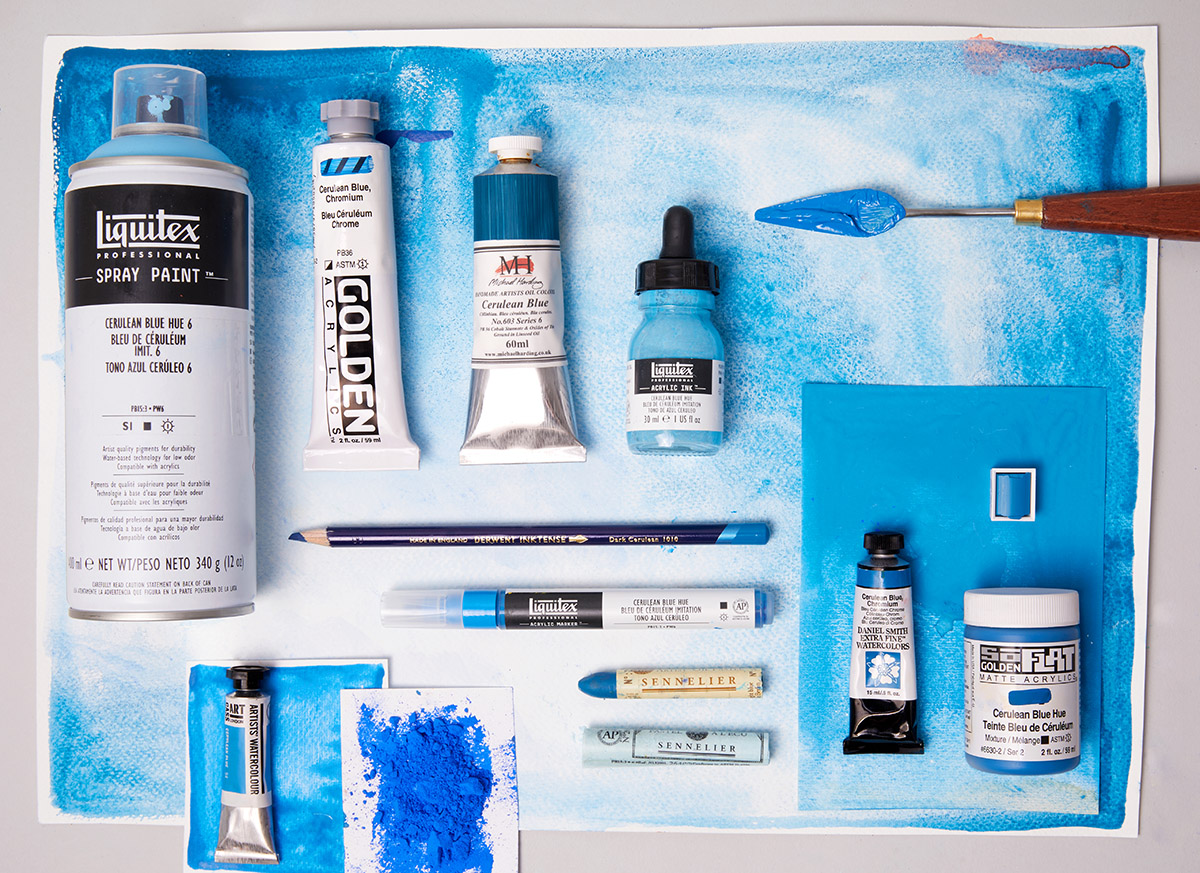Cerulean Blue is a cool and tranquil hue that embodies the essence of a clear sky or calm body of water. With its delicate and subtle appearance, this pigment colour falls within the cyan family, showcasing a range of light blue shades. Let's delve into the specific properties of what makes this pigment so unique.
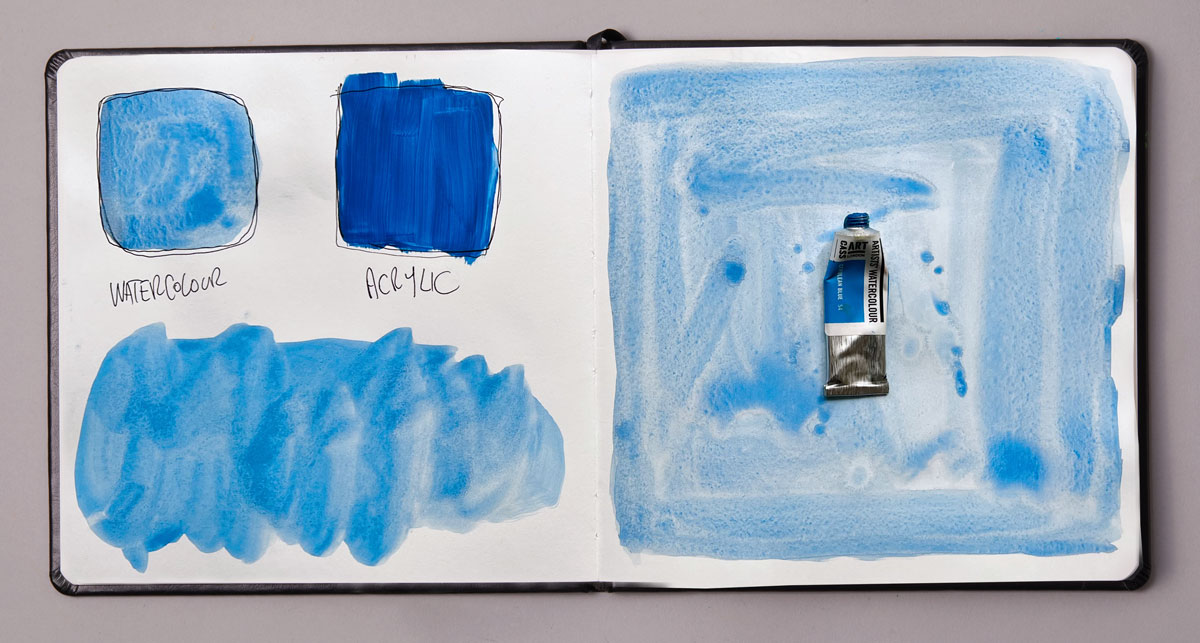
Colour and Appearance
Cerulean Blue is widely considered the perfect sky-blue hue. It’s a bright, pure semi-transparent pigment with green undertones and does not react to light or chemicals, making it a permanent and invaluable addition to the artist’s palette. And artists have long been captivated by the allure of this hue, harnessing its power to evoke emotions and create visually stunning compositions. Renowned painters like Pierre-Auguste Renoir, Mark Rothko, and David Hockney have all utilized Cerulean Blue in their masterpieces. From serene seascapes to dreamy skies, this hue adds depth, atmosphere, and a touch of magic to their creations.
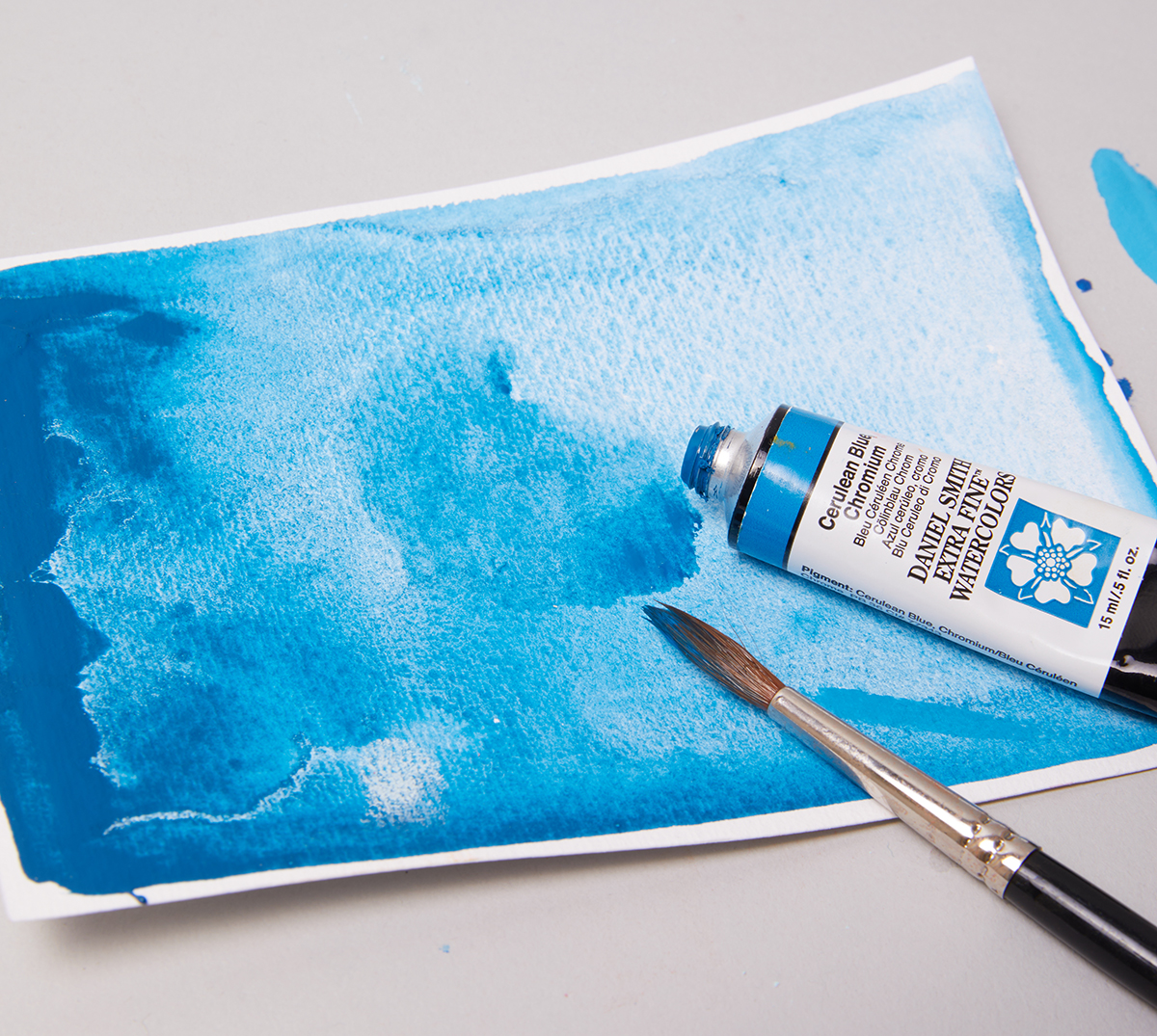
Opacity and Coverage
In terms of opacity, Cerulean Blue is generally considered to have medium to high opacity. This means that it can effectively cover underlying layers or surfaces, providing good coverage with fewer layers compared to more transparent pigments.
Lightfastness
Cerulean Blue is often praised for its excellent lightfastness, ensuring that artworks retain their vibrancy and colour integrity for extended periods.
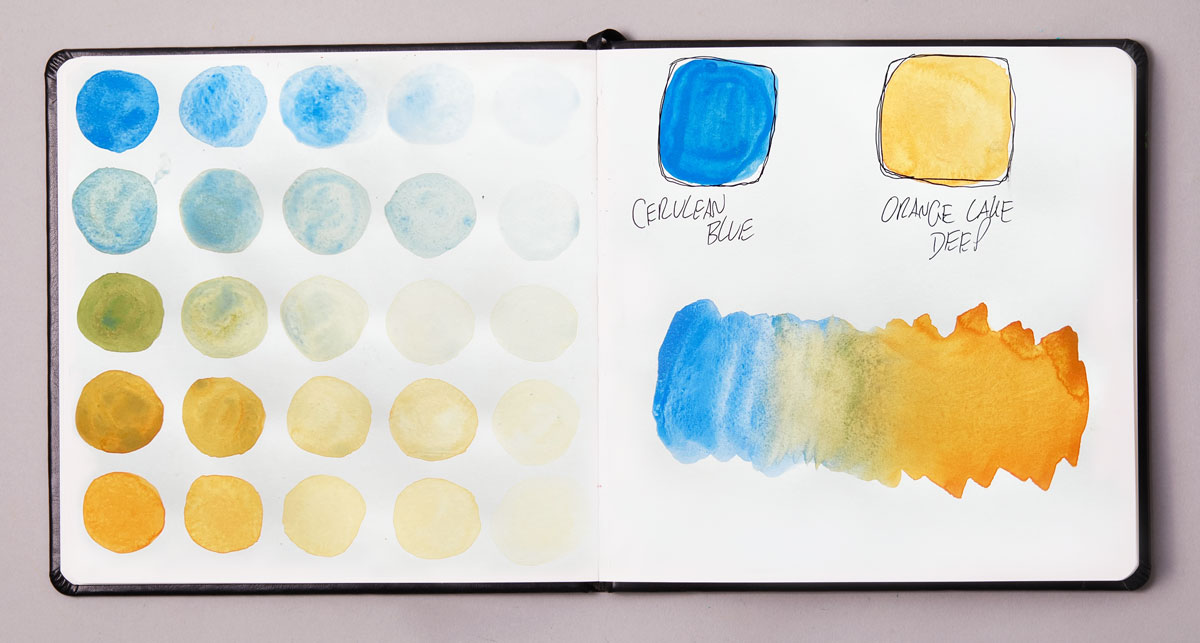
Cerulean Blue and orange are located opposite each other on the traditional colour wheel, making them complementary colours. When this blue hue, which is a cool colour, is mixed with a warm colour such as Orange Lake Deep as you can see above it results in a harmonious mixture of temperature and intensity.
When equal amounts of Cerulean Blue and orange are mixed equally together as they are in the middle mixtures, they can neutralize each other to create a grey or brownish hue. This happens because the wavelengths of light that are associated with each colour cancel each other out, resulting in a diminished saturation and a desaturated tone.
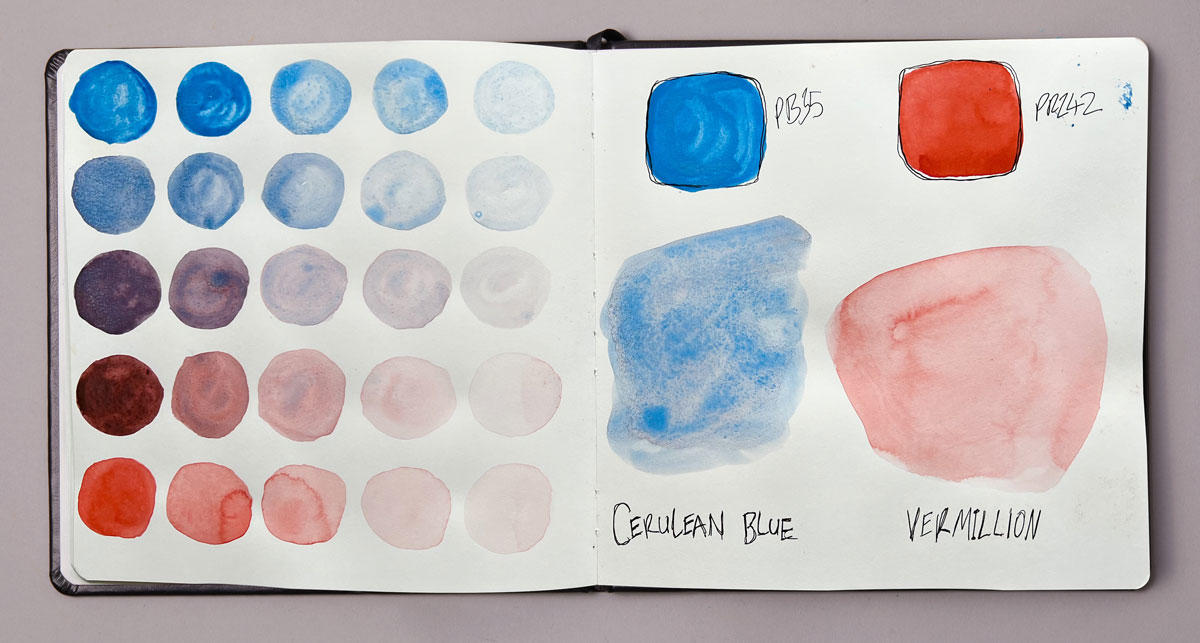
Vermillion Red is a warm, reddish colour, and when mixed with Cerulean Blue, it produces various beautiful shades of purple or violet. The specific shade of purple will depend on the proportions used, with more Vermillion Red creating a warmer, reddish-purple, while a higher proportion of cerulean blue will yield a cooler, bluish-purple.
Overall when it comes to mixing complementary colours like Cerulean Blue and any red, experimentation is key. By exploring different ratios and combinations, you can discover a wide spectrum of purples, grays, and browns that can add depth and interest to your artwork. Remember to start with small amounts of each colour and adjust gradually to achieve the desired results.
Cerulean Blue, with its captivating properties and aesthetic appeal, has secured a special place in the artistic and design realms. Whether used by artists to capture the beauty of nature as its often used or incorporated into design schemes to evoke a serene ambiance, this hue continues to inspire and evoke a sense of calm and tranquility. So, the next time you encounter Cerulean Blue, take a moment to appreciate its captivating qualities and the emotions it can evoke!
